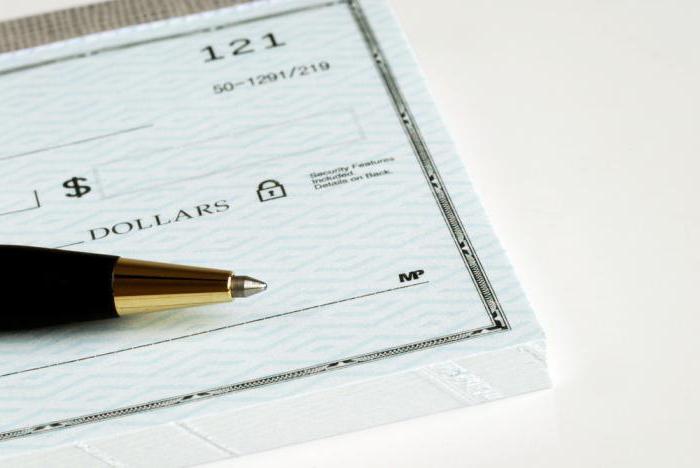Enterprises sometimes have a need to borrow raw materials and other values. Such an operation is executed by a loan agreement or a commodity loan. Read more about how these documents differ, read on.
Loan agreement
According to this document, the lender transfers money (other things) to the borrower with certain signs. The second party undertakes to return the same amount of funds or a similar amount of other goods of the same quality. The characteristics of the property (name, quantity, grade) must be indicated in the contract.
The document is considered concluded after the transfer of funds. If the creditor is a jur. person, the contract is concluded in writing (Article 808 of the Civil Code). In support of the conditions, the borrower must issue a receipt or other document certifying the transfer of values.

The lender has the right to receive interest on the amount of the loan. If their size is not specified in the contract, they are charged at the refinancing rate on a monthly basis (Article 809 of the Civil Code). A loan agreement is considered interest-free if goods are transferred.
If the repayment period is not set, the borrower must return the money at the request of the lender within thirty days. After the funds are credited to the bank account, the amount is considered returned. Interest can be paid in cash and valuables.
Commodity loan
Installment payments for services and goods - this is normal in the calculations. But if interest is provided for its provision, then we are talking about a commercial (commodity) loan. The very condition of paying for the goods through time is not a loan. The provision of credit should be prescribed in the contract. Then the supplier may require payment of goods and interest. The loan agreement should include the following conditions: loan amount, interest rate and frequency of interest calculation.
Differences
A loan agreement applies if the lender is not required to provide value. Their transfer is part of the paperwork. Commodity loan form provides for the obligation of the creditor to transfer values.
Documents differ at the time of entry into force. The loan agreement is considered concluded after the transfer of funds. Prior to this, the parties have no rights and obligations. A commodity loan agreement, unlike a loan, takes effect from the moment it is concluded. That is, if, after signing the papers, the lender refuses to transfer the values, the borrower will demand them through the court.
Benefits
- Commercial loan - This is the most maneuverable form of financing, since it is provided in the form of reserves.
- A commercial loan can smooth out the seasonal demand for goods.
- Deliverables are not property collateral. They can be freely disposed of.
- The borrower can increase the volume of sales of goods without diverting most of the resources from the turnover.
- The cost of a commercial loan is usually less than a standard loan.
- Attracting a loan reduces the overall period of the financial cycle, reducing the need for the formation of current assets.
- Quick paperwork.

disadvantages
- Commercial loans can satisfy the need for capital only in terms of financing stocks.
- Limited term loan. Usually it is several months.
- Commercial loan is not secured. Therefore, for the lender there is a risk of bankruptcy of the borrower in the event of a deterioration in market conditions.
Types of Commodity Credit
- Deferred loan. The conditions and frequency of payments are specified in the contract.
- Loan issued by bearer with a time limit or a specific date.
- Open account loan. It is used in relations with regular suppliers for multiple purchases of certain products in small batches. The supplier considers the value of the shipped goods in a separate account. Debt is repaid once a month.
- Consignment - foreign economic commission operations in which the exporter ships the goods to the company with the order to sell them. Settlements are made after the sale of products.

By providing commercial credit, the company aims to satisfy the need for inventories and reduce the cost of raising capital.
Management
Commercial credit is targeted. Its attraction should be determined by the amount of raw materials available. If the organization intends to use commodity credit to obtain additional income on an ongoing basis, then it is necessary to find new partners, improve the types and schemes of providing loans.
The cost of attracting a loan should be less than a standard loan. It must be able to count. The key element is the discount that is provided for cash and the period of use of the loan:
- Cost = ((Discount / (1 - Discount)) * (360 / Number of days).
The profitability of a commercial loan is defined as the difference between the average term of use of the loan and the period of circulation of stocks. The higher it is, the more efficiently organizations use this financial instrument. You can adjust the level of profitability by increasing the period of use of the loan or by reducing the life of stocks. If the second indicator is higher than the first, then additional sources should be involved in the calculations. A special fund may be formed at the enterprise to finance such transactions. Loan settlements are included in the payment calendar.
Accounting
The presentation of the loan refers to financial investments and is accounted for in account 58-3. Interest-free loans are shown as receivables. The debtor takes into account the amounts on account 66 or 67.
The funds disbursed to the accounting department are displayed as part of the financial investments subject to the availability of a formalized contract:
- DT58-3 KT51 - loan granted.
An interest-free loan as part of financial investments cannot be taken into account. An important condition is not fulfilled - the ability to generate income. Therefore, such loans are accounted for account 76:
- DT76 KT51 - interest-free loan provided.

The amount of the loan provided in kind is determined based on the value of the transferred assets. At the same time, the value of the property is not included in expenses, as in the case of a standard retirement, and the return of values is not income. But for the purposes of VAT accounting, a transaction is considered a sale and is subject to VAT. The following entries are formed in the control unit:
- DT58-3 KT68 - tax on commodity credit issued in kind is accrued.
- DT76 KT68 - tax is charged on the amount of interest-free loan.
Repayment of the loan is made out by postings:
- DT51 KT58-3 (76) - loan repayment.
- DT19 KT58-3 (76) - the “input” VAT on the interest (interest-free) loan is taken into account.
- DT68 KT19 - VAT deducted.
Summarize.
| Operation | At the creditor | The borrower |
| 1. Issuance / receipt of a loan: a) the value of the property |
DT58-3 KT91-1 | DT10 (41) KT66 |
| b) for the amount of VAT | DT58-3 CT68 | DT19 CT66 (67) |
| c) property at discount prices | DT91-2 CT10 | No records |
| 2. Interest calculation | DT76 KT91-1 | DT91 CT66 |
| 3. Interest payment | DT51 KT76 | DT66 CT51 |
| 4. Posting of property: a) the value of assets |
No records | DT10 CT60 |
| b) the amount of VAT | No records | DT19 CT60 |
| 5. Payment of interest by property a) accrued commission |
DT10 CT76 | DT66 KT91 |
| b) the amount of VAT | DT19 CT76 | DT66 CT68 |
| c) value of property at discount prices | No records | DT91 CT10 |
| 6. Loan repayment: a) the value of the property |
DT10 KT58-3 | DT66 KT91 |
| b) the amount of VAT | DT19 KT58-3 | DT66 CT68 |
| c) value of property at discount prices | No records | DT91 CT10 |
| 7. Submission of deduction tax | DT68 CT19 | DT68 CT19 |
Taxation
Expenses and income in the form of property transferred under contracts are not taken into account when taxing profits. Values may be higher or lower than the original price. The difference is also not taken into account when calculating NPP.
The creditor must include the interest received in non-operating income. If they are paid in the form of property, they are taken into account when calculating the tax base based on the transaction price.
The borrower obtains ownership of the transferred values. But such transactions are not subject to VAT. This position is beneficial for the organization. The lender may accept a deductible tax paid on the purchase of goods. If the transfer of VAT is not charged, then the parties do not take into account the "input" VAT, the values will be used in non-taxable activities. By returning a commodity loan, the debtor can charge VAT. This will allow him to settle on acquired values.

Interest on a cash loan is tax deductible. This is spelled out in Art. 149 Tax Code. This provision does not apply to commodity credit. Interest paid in cash in an amount exceeding the size of refinancing rates shall be taxable:
- VAT = (Discount under the agreement - Discount at the Central Bank rate) x 18/118
Interest on a commercial loan is a fee for the use of values. The buyer owes money not for value, but for deferred payment. The loan is not subject to VAT. But tax authorities will have to prove this point of view only through a court. If you don’t want to argue, it is better to calculate the VAT in the amount of interest (do not present it to the buyer, but take it into account when calculating the NPP).
On the date of sale, the seller includes revenue in income, and interest in other (non-operating) receipts monthly on the last calendar day, and then on the return date. The buyer takes them into account in other (non-operating) expenses for the same dates as the seller, but within the limits of the standard. And if the amount paid is greater, then the difference for tax purposes is not taken into account.
Execution of transactions by government agencies
How to draw up and display in accounting a commodity and commercial loan provided by a municipal enterprise?
For the purposes of accounting and control between these documents there is no difference. But there are some legal features. The amount of interest must be indicated in the contract. Otherwise, the borrower must return the amount of interest calculated at the refinancing rate. The payment procedure should also be spelled out in the document. If this condition is absent as well, then interest must be paid off monthly in equal installments.
The provision of a commodity loan is made out in the BU with the following entries:
- DT58-3 KT41 - a commodity loan was provided.
For the purposes of VAT accounting, the transfer of values is considered a sale. There is an object of taxation. If the loan is issued in kind, the VAT payer in the Bank makes the following entry:
- DT58-3 KT68 “Calculations for VAT” - tax is charged on the loan amount, which is issued in kind.
In the balance sheet, interest can be taken into account as part of other or income from ordinary activities.

Workflow
The receipt and provision of borrowed funds is made out by primary documents depending on the type of property: cash loan in non-cash form - by payment order, commodity loan - TORG-12 consignment note.
Revenue accounting
The organization can independently choose how to recognize the receipt of interest. The nature of the activity, the type of income, and the terms of a commodity loan are of key importance. The procedure for accounting for income needs to be fixed in the accounting policy.
- DT76 KT91-1– monthly interest calculation.
- DT50 KT76 - receipt of funds on account of interest payment.
- DT76 KT91-1 - interest accrued in kind.
- DT41 KT76 - repayment of a loan by property.
- DT19 KT76 - “input” VAT.
Interest calculation
The amount and procedure for paying a commission should be spelled out in the contract.If this condition is absent, the borrower must repay the debt within 30 days after the presentation of the claim and pay interest on a monthly basis. If a commission is not charged (except for the provision of a commodity loan), this should also be indicated in the contract.
The amount of interest in kind is prescribed in the contract. Interest in cash is fixed at the annual rate and is calculated on the basis of the loan amount, rate and the number of days of using the loan. A clear pattern is usually used, i.e. 365 or 366 days are taken into account. Charges begin on the day after the loan. But organizations in the contract may provide for a different procedure:
- % = Loan amount * Annual rate * Number of days.
Example
On April 15, 2014, the LLC granted OJSC a cash loan in the amount of 500 thousand rubles. The return date is May 28, 2014. Funds are provided at a rate of 6% per annum. Interest should be transferred on the last day of the month:
- 500,000 * (0.06 / 365) * 15 = 1232.87 rubles. - the amount of interest for April.
- 500,000 * (0.06 / 365) * 28 = 2301 rub. - the amount of interest for May.
Reflect the operations in the control unit:
- DT58-3 KT51 - loan issued.
- DT76 KT91-1 –– interest is accrued.
- DT51 KT76 –payment of interest.
- DT51 KT58-3 - the loan was returned.
Loan for individuals
In a market economy, the sales sector for goods with financial instruments, in particular through commodity credit, has grown. The convenience of obtaining a loan is determined by demand. Most people cannot save up the amount of money to buy, for example, large household appliances. To solve this problem, commodity credit is used. Banks together with shops offer customers to purchase goods on favorable terms.
The peculiarity of the transaction is that you do not need to visit a financial institution to process documents. Employees serve customers directly in the store. Acquired property becomes collateral for the loan. That is, in case of default, the bank can pick up the goods in payment of debt. In practice, this is rare.
Before providing a loan, the bank checks not only the potential customer, but also the default of the goods. If there have been many cases of non-repayment of a loan with this product, a loan will most likely be refused. The data of the borrower itself is checked according to a simplified system: on the basis of a passport and, for example, SNILS. No one will ask for an income statement. The decision will be made based on the data from the questionnaire.

Advantages of the transaction:
- the ability to make an urgent purchase without accumulating funds;
- a wide selection of banking service programs;
- the ability to repay the loan in any convenient way: via the Internet, in a terminal or at the cash desk;
- lack of collateral;
- quick paperwork.
In addition to the described advantages, cash commodity credit also has a number of disadvantages. The most important is a huge overpayment. Even if, under the terms of the agreement, a loan is provided at 0.01% per annum, in addition, the bank may require life insurance or pay a one-time fee for issuing funds.
Lending is not done by employees of a financial institution, but by sellers. They do not have the necessary knowledge, may incorrectly inform the client. If you have to return the goods, a lot of time will be spent on renewing the contract, adding additional points to it.
It may be difficult to repay a loan in small towns. If there is no bank branch in the village, the Internet does not work well, then you will have to send payments by postal order or through cash desks of other banks. Firstly, it takes longer. Secondly, a higher commission is provided for such services.








